| Which course does this assignment belong to | 2301-MUSE社区-CSDN社区云 |
|---|---|
| What are the requirements for this assignment | beta Sprint |
| The goal of this assignment | To summarize the beta task progress and the team's sprints |
| Team Name | Themis |
| Top-of-the-line collection of essays Link | click here |
| Other references | CSDN、《The Practice of Project Construction》 |
Catalogue
I. Overview of task completion during the Beta sprint
II. Overview of member contributions
III. Improvement plan and implementation measures
IV. Link to project source code
V. Project function display:
VI. Reflections of the participants:
I. Overview of task completion during the Beta sprint
| Task Detail | Task Completion | |
| Task 1 | Optimize the UI interface to make it more beautiful and user-friendly | 100% |
| Task 2 | In the personal home module, add a page for self-help questions and answers | 100% |
| Task 3 | Complete the backend programming for searching the inventory. | 100% |
| Task 4 | Developer testing and real machine testing are performed based on all user usage scenarios | 100% |
II. Overview of member contributions
| Student ID | Name | Task Description | Contribution |
|---|---|---|---|
| 832101125 | Jie Huang | Backend(Searching) + Blog writing | 100% |
| 832101128 | Daming Fu | Backend(Searching+Comment) + Blog writing | 100% |
| 832101121 | Weijie Hong | Frontend (Q&A creating) + Blog writing | 100% |
| 832101220 | Siqi Lin | User interface improvement + Blog writings + Front-end testing | 120% |
| 832101108 | Jiayi Lu | Test + Blog writing | 100% |
| 832101109 | Hongming Chen | Test documentation writing | 100% |
| 832101116 | Wenxuan Zhou | User perception information collection + User questionnaire writing + Blog writing | 100% |
| 832101202 | Zhipeng Wang | User perception information collection + User questionnaire writing + Blog writing | 100% |
| 832101211 | Xinyun Li | Defense ppt production | 100% |
| 832101217 | Zhaoqing Lin | Defense ppt production | 100% |
| 832101207 | Yuyang Hua | Defense ppt production | 100% |
III. Improvement plan and implementation measures
In Alpha Stage Issues Summary Essayand Prediction Essay---THEMIS we mentioned that the unfinished part of the project mainly includes
- User side: The UI is a bit shabby and could be optimized again. Set self-service Q&A interface to make it more friendly to new users;
- Back-end: continue to improve the user search leasing module and comment module;
- In terms of test, the scene test and multi-device real machine test of user partial cancellation operation were not carried out.
Implementation measures:
- UI: searched for more novel ICONS, replaced the corresponding ICONS, and changed the application color matching that conforms to the aesthetic of college students; See A for details
- Self-service Q&A interface: Refer to the open source works in the wechat Cloud development competition, and set the self-service Q&A interface based on this. See A for details
- Search item module: Browse similar open source projects on Github and write the search logic suitable for this project. General implementation of comments and delete module writing.
- In terms of testing, multi-model testing is realized through real machine testing in wechat developer tools, and development side testing is completed through testing tools.
IV. Link to project source code
Link to pre-beta source code:GitHub - 0128130Raven/EE308_Team: Final
Link to post-beta source code:THEMIS_Beta_Sprint_Project
V. Project function display:
Note:
- The UI has adjusted the overall color scheme and some ICONS, but only part of the UI is shown here to keep the blog simple.
- Check out the following blogs for more information on user usage and software testing
Frequently Qusetion Answer:
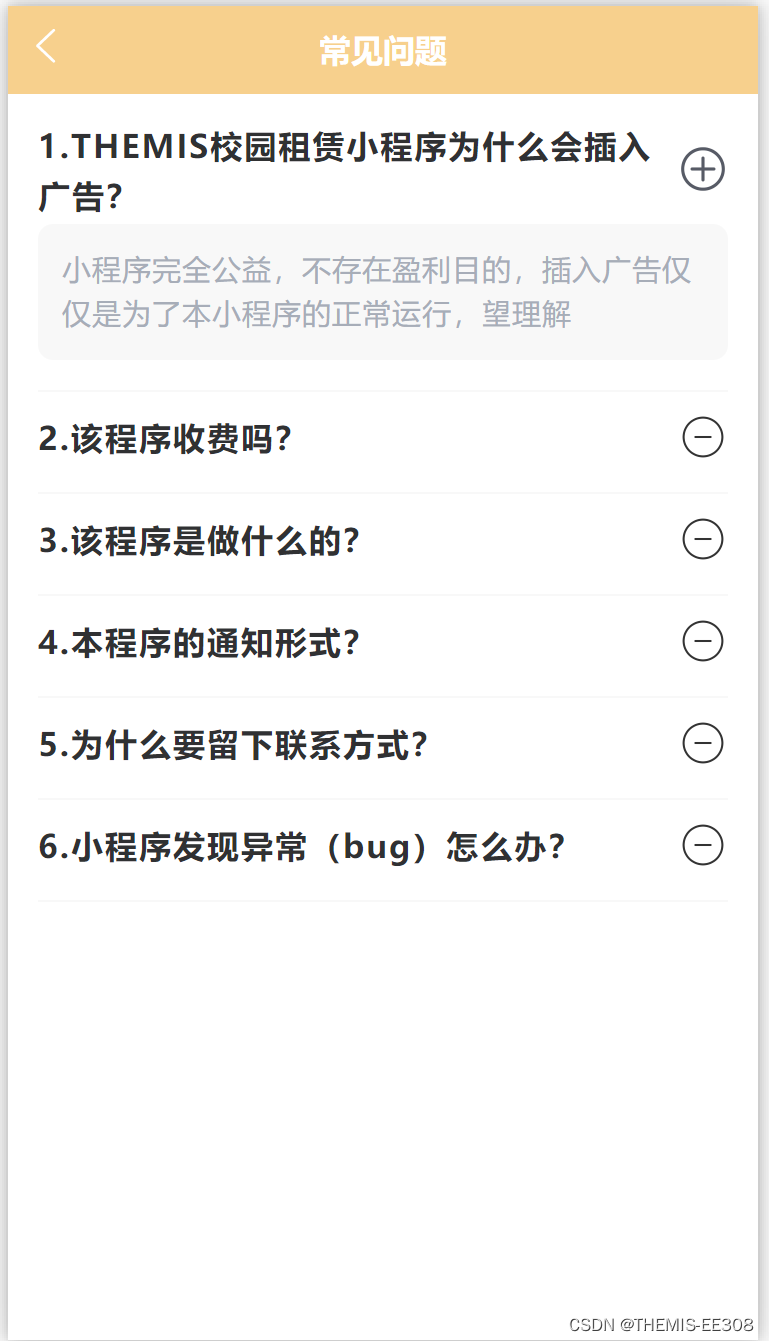
Home Page:
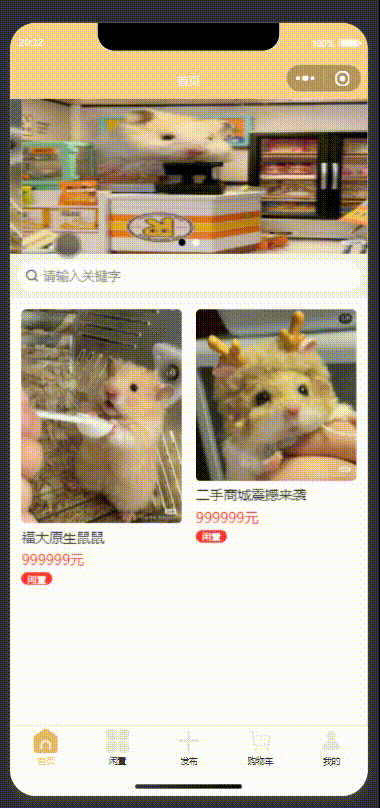
Good List Page:
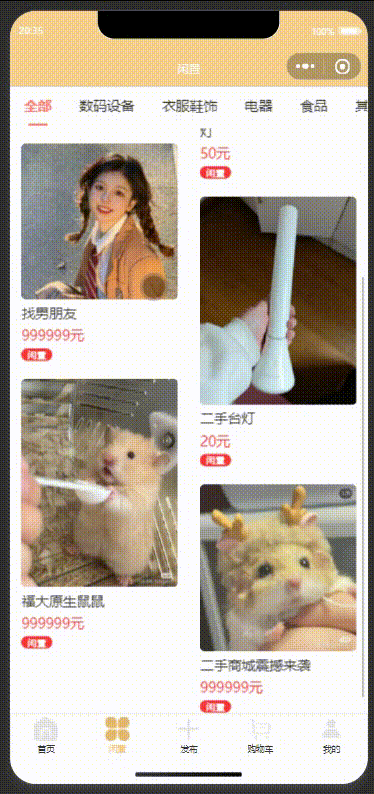
Search page:
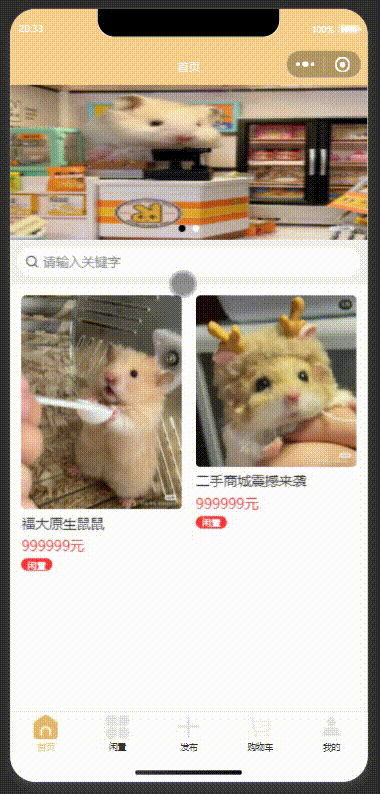
Comment Module:
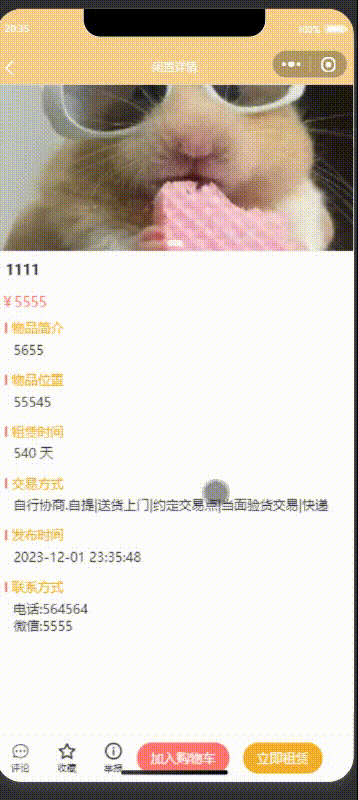
VI. Reflections of the participants:
Jie Huang:
In this Beta sprint, the functional defects of the items that could not be classified in the previous list were completed. Compared with the previous object specific coding, the code structure of the item classification module is different, including the query classification, storage type, and small program interface. It is also more familiar with this type of module code writing.
Daming fu:
During this phase of beta sprint, I worked with my teammates to add back-end features as I familiarized myself with the original functionality and grew familiar with the process of testing and adding to it. It made me more comfortable in the process of back-end engineers and testing, and I was able to complete this project better with my teammates.
Siqi Lin:
Beta testing is not only a process of product iteration, but also a process of team and
individual learning. By facing the actual use of users, we can better understand the market
demand, and constantly improve their technical level and problem solving ability.
Weijie Hong:
This beta sprint primarily focused on comprehensively improving and optimizing various
shortcomings identified in the alpha version. Specifically in terms of the frontend interface,
we realized that the original version lacked a help page, i.e., a Frequently Asked Questions
(FAQ) interface. Notably, we incorporated a practical feature in the FAQ interface:
interactive buttons. Utilizing toggle events, we enabled dynamic interaction for information
display, allowing users to show or hide relevant FAQs and their answers by clicking the
button.
Wenxuan Zhou:
In the beta sprint, I was responsible for the user experience survey with Zhipeng Wang.
In the researching process, we talked about the design of the questionnaire, thought about
what users really need, and analyzed the results of the questionnaire. I made deep
understanding of users thoughts, more familiar with the user experience work, and learn
more details about the quality of our project. I know more about what we should concern
about.
Zhipeng Wang:
In the process of user survey report, I need to comprehensively analyze and evaluate user
feedback to determine the advantages of the project and the direction of improvement. I
think it's a very challenging but also very rewarding job. Through the communication and
feedback with the users, I was able to have an indepth understanding of the needs and
expectations of the users, which provided important references for the successful
development of the project.
Jiayi Lu:
In the Beta Sprint, I contributed to backend bug fixes, performed black-box testing, and drafted test documentation. Navigating backend intricacies enhanced my
problem solving prowess. Blackbox testing broadened my perspective on user experience,
and documenting tests underscored the importance of clear communication.
The experience was both challenging and rewarding.
Hongming Chen:
In the programming beta testing phase, I was primarily responsible for backend testing
of the WeChat leasing mini-program. Throughout the learning process, I encountered
numerous challenges, delving into programming and system design, particularly in areas
such as API testing, data validation, security, and performance testing. Close collaboration
with the development team was crucial, along with acquiring skills in using automated
testing tools, analyzing logs, and tracking errors. The entire experience deepened my
understanding of the significance of the quality assurance process, emphasizing the
ongoing need for learning and improvement as a critical path to enhancing backend testing
skills.
Xinyun Li:
As the UI designer for a campus rental WeChat mini program, the testing phase underscored the vital link between design and user experience. Valuable user feedback guided improvements, focusing on an intuitive interface. We addressed issues like screen size variations with responsive design, collaborating efficiently with developers and testers. This teamwork enhanced my understanding of user needs and equipped me to navigate testing challenges. I look forward to contributing to mini program development through optimized design, viewing this testing phase as a pivotal learning experience inspiring continuous improvement.
Zhaoqing Lin:
As a team UI designer, I deeply understand the needs of users for our small program through beta testing. Users focus on interface fluency and overall design style, emphasizing consistency and simplicity. Special attention is paid to the search function, where users seek speed and accuracy. Work with the team to continuously optimize the mini program UI through direct interaction and feedback to lay the foundation for the launch of the official version. Looking forward to continuous cooperation with the team and continuous innovation, so that the campus rental mini program becomes a platform that users love and trust.
Yuyang Hua:
As a UI designer, I focused on refining and maintaining design consistency in the Mini Program during the beta phase. Addressing interface issues on my Xiaomi 11Pro, I emphasized the importance of performance stability across different devices. My work involved responding to test feedback and conducting real device debugging to ensure a seamless user experience.

)










——Unique-ID)






